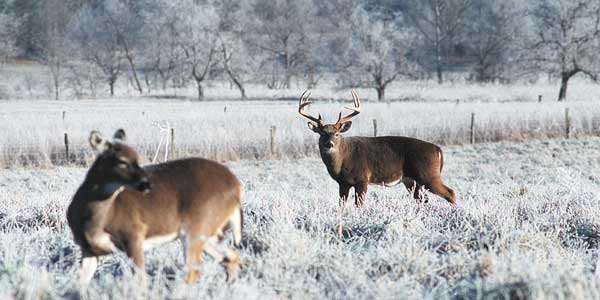
Though the whitetail population has dropped since 2000, Palmetto State hunters are still in great shape for the coming season.
For the majority of deer hunters in South Carolina, the season is upon us.Sure, gun season has been open for two weeks in a fairly wide swatch of the Palmetto State, but hunter success isn’t really that widespread.
It’s September, when deer start acting like deer and hunters start acting like hunters that things really start to break loose.
Archery season opens in most of the Upstate and along the upper coastal plain, with gun season right on its heels. Hunters in the middle coastal plain get to take out their firearms at the first of the month, and throughout the state, either-sex seasons start to open here and there, for a day or two or more. And the first stirrings of the rut will start to show up in a few places by Oct. 1, with the better-be-in-your-stand days of October right over the horizon.
Taking all that into consideration, an overview of South Carolina’s deer herd seems to be justified.
Here goes..
South Carolina hunters will have around 800,000 deer to pursue this season. That figure is down from all-time record levels at the turn of the century, when around a million whitetails filled the state’s 48 counties.
Biologists with the S.C. Department of Natural Resources believe the downturn in the population will continue for one simple reason: we’re losing deer habitat.
Charles Ruth, the deer-project leader for the SCDNR, said it’s an easy equation to figure out. More habitat means more deer — and the opposite holds true. Because of factors almost completely outside the realm of sportsman’s — and government’s — control, South Carolina is losing deer habitat, and not to urban sprawl or development.
“The big picture is, we’re losing habitat; that’s a trend we’ve seen since 2000,” said Ruth. “What got us into the deer business was all the timber cutting in the late 1970s and through the 1980s. That created fantastic deer habitat. We had deer scattered all over, and that timbering activity was like pouring gas on a fire. From the late 1980s through the 1990s, it was on.
“But now, many of those same areas have fewer deer, because so much of what was timbered back then is now grown up in 15-year or older stands of pines, and that’s doesn’t make for the great habitat that those new cutovers do. You can get a mental picture of what’s happening. The pines get bigger, your canopy closes, the briars are all cleared out, it supports fewer deer.”
But lest hunters start sounding a clarion call to chop down all of the state’s pine trees, the hunting is still pretty darned good — just not as good as it was in its heyday a decade ago.
“We still have good deer habitat all across the state, with a few exceptions,” Ruth said. “We’ve got what Mother Nature intended us to have. We’ve never had great soils; our soils are really holding back the quality of deer we have, but we don’t have any genetic problems. Mother Nature just made the deer in this state little and brown.”
Where is the best deer habitat? Ruth said that the habitat is fairly equal all over the state, with a few exceptions.
“Once you get east of Rt. 17, which pretty much parallels the coastline, there’s not a lot of good deer habitat between Horry County and Charleston,” he said. “You’ve got low deer density down there, but once you get west of 17, you’re ‘up on the hill.’
“The second big exception is the mountains, but they make up just a small part of South Carolina. You’ve got a lot of rocky areas, a lot of slope, and in a lot of areas, not a lot of timber or habitat management. You’ve got really low deer densities.
“You’ve got some real quality deer coming out of Pickens, Oconee and Greenville counties, but those really good deer aren’t coming out of the mountains; they’re coming from the southern part of those counties. Rt. 11 and I-85 are pretty good break points. You get south and east of that, and you’ve got more of a midwestern type habitat, except without the row crops. You’ve got pastures and open lands interspersed with woodlots.
“Once you drop out of the mountains, you get better habitat, more moderate deer densities, and in a lot of the habitat, you’ve got hunters looking to keep the deer population from getting out of hand. You’ve got woodlots, creeks, drainages and big open pastures.
“We have some areas in the Sandhills — Marlboro, Dillon, Chesterfield — that little strip of counties through the middle of the state all the way to Aiken. And we’ve still got some places along the Pee Dee (river) with tremendous agriculture that are not hospitable to deer. Some of those same counties, Marlboro and Dillon, are in that area. The cover is limited and you’ve got relatively sandy soils. You’ve got a long season, and there’s dog hunting there, and without a lot of cover, you can keep the deer population beat down there pretty much.”
Pressed to name the best overall counties in the state, combining deer density and potential to produce big bucks, Ruth singled out a few in each general area. In the Lowcountry, he likes Orangeburg, Allendale, Hampton, Williamsburg and Bamberg. In the Midlands, it’s Calhoun, Kershaw and Aiken. In the Upstate, it’s Anderson, Abbeville and the lower sections of Oconee, Pickens and Greenville.
“Your coastal counties — Allendale and Hampton, our historical deer areas — that’s some of the best deer habitat on planet earth. You’ve got some real high populations, and there’s still some farming down there,” Ruth said. “Orangeburg is still great, and Anderson and Abbeville are great, especially in terms of trophies. I think Anderson is No. 5 on our all-time list for trophy bucks.
“You get Anderson-Abbeville vs. Orangeburg. All three are great places to hunt, but the habitat is totally different. Orangeburg has got a lot of agriculture, a lot of farming. Anderson and Abbeville are more pasture-oriented. Your biggest difference is really with respect to land-ownership patterns on the coast vs. the Piedmont. There are probably more 5,000-acre landholdings in the Lowcountry than there are 500-acre ones in the Piedmont and Upstate.”
Ruth said that it’s typically mid-September before hunters really start to get much action — with the exception of the first few days after the early gun season opens in mid-August in parts of the state.
“A lot more of our hunters are beginning to realize that the early season is probably hurting the harvest rather than helping,” he said. “The first month is buck only, so the does are not vulnerable. And other than the first couple of days, you really don’t get much harvest until mid-September. And what this creates is a lot of disturbance in the woods. The deer start to get a little spooky before they really should.
“By the middle of September, you start so get some action. You get a little more breeding activity, and you’ll see some acorns start to drop around the middle or the last 10 days of the month. It just builds every week on into October.”
Ruth said there are two main “peaks” of the rut or breeding season across South Carolina. The peak in localized areas may vary by a few days because of different grades of habitat and the health of a local deer herd, but 70 percent of the does in the Palmetto State are bred either the last week of October or the first week of November.
“It hasn’t showed up in our data yet, but when you get right along the coast, you can say the peak is a couple of weeks early. The peak in the mountains is around Thanksgiving,” he said. “The best hunting in the mountains will be from Nov. 1 through Thanksgiving; the best around the rest of the state will be from Oct. 1 to Halloween.”
The peak of rutting “activity” — scraping, bucks chasing does and the like — usually precedes the actual peak of breeding by a week or so. Ruth said that the average doe in South Carolina conceives on Oct. 30.

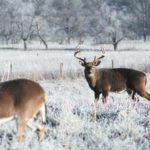
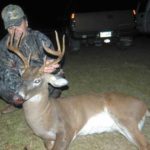
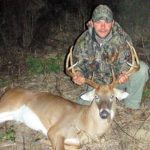
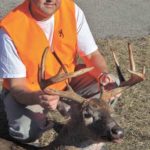



Be the first to comment